Fluctuating temperatures for the majority of April has made spraying winter crops tricky. Those that held off have less crop scorch, which is evident across much of the North – East. Temperatures look to increase towards May and we can put the frosty mornings behind us at last. A lack of rainfall (less than 10ml of rain in April) has put crops are under a lot of stress. Ground is beginning to become extremely hard on top with cracks deepening.
WINTER WHEAT
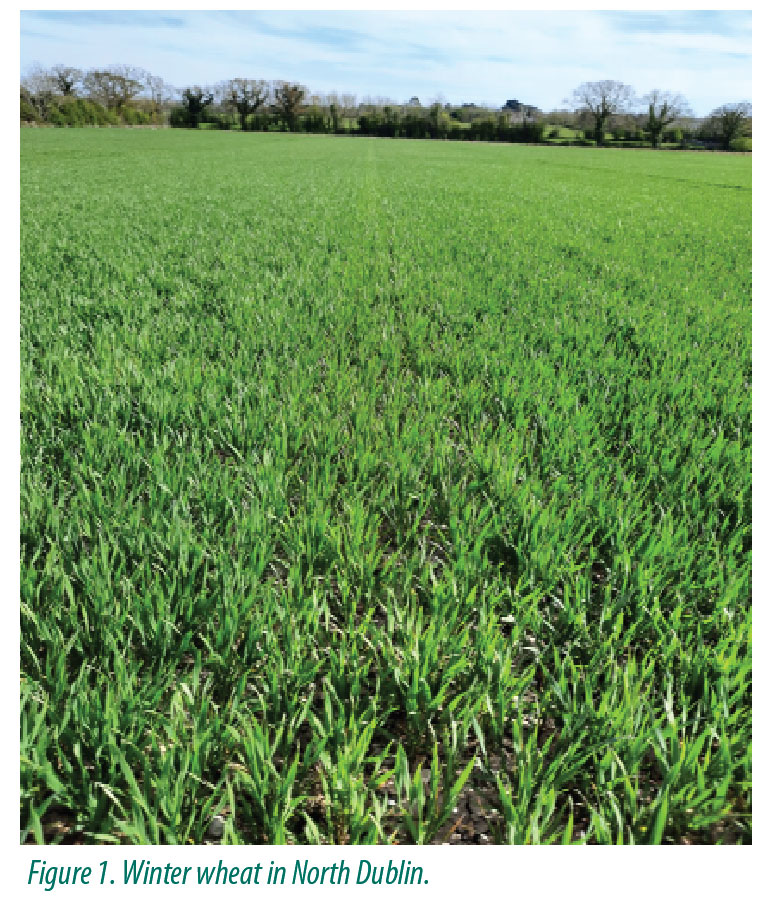
The critical leaf 3 timing on winter wheat is fast approaching. As leaf 3 is responsible for approximately 10% of yield in winter wheat, the importance of keeping this leaf clean and free of disease should not be underestimated.
A clean leaf 3 will reduce Septoria moving up the plant in rain splash events. To make the most of your T1 timing, leaf 3 should be fully emerged.
Dissecting plants with a sharp scalpel is the best way to determine which leaf is actually emerging, by counting leaves back from the first leaf (flag leaf). Having this spray applied at the correct stage will leave you set up nicely for the next application at flag leaf (T2). Include a growth regulator at the T1 timing.
At the flag leaf timing, if you see some Septoria on leaf 3, it is an indication that your T1 timing was too late, or else that the T0 (Leaf 4 spray) was too early. In summary, a correct T1 timing paves the way for a successful fungicide programme, in order to maximise the yield potential of your crops.
Yellow rust has been a big problem this year, especially on varieties such as Bennington, Torp, Graham and JB Diego. As the life cycle can take only 7 days to complete, it spread rapidly in the crop during the beginning of April. Yield can be reduced as much as 30% in high pressure situations. However, it is one of the easier diseases to control in wheat, and robust T0 applications have given strong curative activity of this disease.
Eyespot has been spotted on a number of crops in the north east as of late. This disease not only weakens the stem (lodging potential), but restricts the movement of water and nutrients to the ear, causing whiteheads. Yield can be significantly affected. Be on the lookout for stem based lesions.
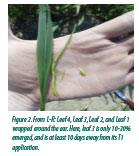
Crops that are struggling at the moment are showing signs of nutrient deficiencies, particularly manganese and zinc.
To help them cope with abiotic stress and promote plant growth, speak to your Drummonds agronomist to tailor a biostimulant product to the needs of your crop.
WINTER BARLEY
2021 will be an interesting year for winter barley. So far, we have seen fluctuating temperatures, a lack of rainfall in late March and April, and some crop scorching. All of these factors will certainly stress the crop. This unfortunately will provide the perfect recipe for ramularia, and without chlortothalonil will be a tough disease to control. While it is early in the season to see Ramularia, it can be spotted as a small brown rectangular lesion surrounded by a yellow halo. Barley, unlike wheat, forms its yield potential early in the growing season. Winter Barley T1’s should be complete by now, as well as fertiliser applications.
WINTER OATS
Bring Winter Oats on index 1 soils to 165kg/N/ha. For every tonne of extra yield expected over 7.5t/ha, increase N by 20kg/N/ha. Fertiliser application should be completed by GS 32, the growth stage of most crops currently.
Powdery mildew and crown rust are the diseases to watch out for at the moment. Mildew will effect both the yield and quality of winter oats, reducing yield by 10% in bad situations. Additionally, crown rust can reduce yield by up to 20%.
As temperatures begin to increase as we come into the summer months, crown rust will move into the crop. Varietal resistance coupled with a correct fungicide programme will control this disease.
SPRING CEREALS
The spring sowing is almost finished at this stage. Early sown crops of barley are at growth stage 21/22, the start of tillering. This is an ideal timing for an application of trace elements – seaweed and manganese – especially in these cold nights to reduce abiotic stress. Zinc could also be added to drive root development on slowly emerging crops. Ensuring crops have adequate micronutrients to promote tillering will be beneficial.
Later sown crops have two leaves unfolded, with the third beginning to appear (GS 12- 13). Much of the later sown barley was sown deeper to reach soil moisture and is still appearing – give these crops a chance to reach 3 leaves before using an aphicide. Aphid numbers appear low for now – primarily due to the fluctuating temperatures restricting their flight patterns. It is important to remember that later sown spring barley is at more of a threat to BYDV (Barley Yellow Dwarf Virus) than early sown – due to aphid activity.
Be wary of leatherjackets, slugs and crows attacking crops, especially those that have not been rolled. Place some muesli under a slate overnight as bait for slugs. If there are more than 4 in the morning, consider treatment. Rolling is an effective way at reducing damage from slugs and leatherjackets.
Normally, weed control in spring cereals should be completed by the early tillering stage of the crop. One of the most important considerations when applying a herbicide is to only apply when there is a period of strong growth. Cold conditions trigger plants to produce a waxy layer on their surface – meaning the herbicide must pass through it before reaching the target. High growth causes the waxy layer to reduce and improves herbicide effectiveness.
In terms of spring cereal nutrition, apply the final 2/3 of N at the tramlines visible stage.
Speak to your Drummonds advisor for further information on this.
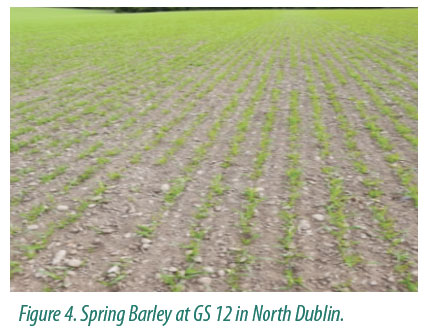 LIQUID NITROGEN
LIQUID NITROGEN
With rain finally in the forecast, the advantages of using liquid nitrogen over granular should be reiterated. In such dry conditions at the moment, liquid nitrogen will be much faster acting compared to granular application. As it is plant available and does not need to undergo a conversion process, crops can immediately avail of the benefits of liquid nitrogen. The ammonium, urea and nitrate means some N is immediately available, and some will be available later. The uniformity of application will also be advantageous in current weather conditions. Remember to allow a 2 day gap between liquid N and agrochemical application.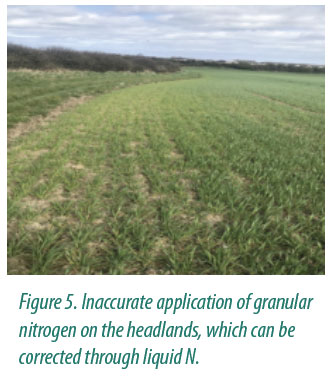
LEAF ANALYSIS
All winter crops should have nutrient requirements fulfilled by now. Leaf tissue analysis provided by Drummonds can reveal important details about the nutrient status of your crops. In order to maximise yield potential, correct nutrient deficiencies before GS 37 in wheat and before the head spray in winter barley.
For further information about leaf analysis, speak to us at Drummonds
OILSEED RAPE
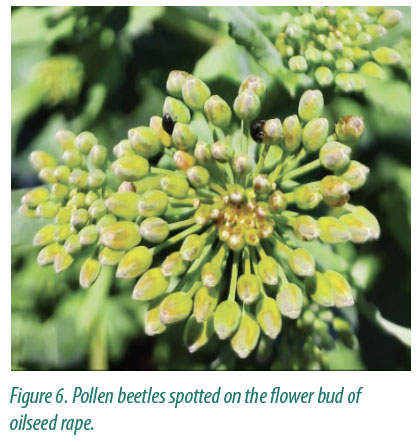 Pollen beetles are beginning to appear on the flowers of Oilseed rape crops. Where plant counts are in the region of 30-50 plants/m2, and there are 18 pollen beetles, an insecticide application will be warranted.
Pollen beetles are beginning to appear on the flowers of Oilseed rape crops. Where plant counts are in the region of 30-50 plants/m2, and there are 18 pollen beetles, an insecticide application will be warranted.
Where plant counts are lower, the threshold is 25 pollen beetles per plant.
Keep a close eye on this as flowering progresses.
Article Written by: Michael Howard, Drummonds Technical Sales Advisor 086 185 5868

